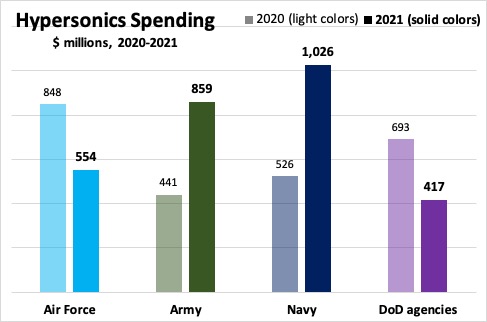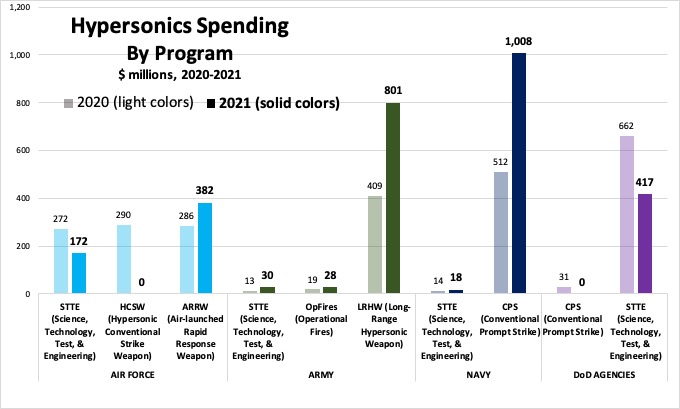November 11, 2020 |
International,
Aerospace,
Naval,
Land,
C4ISR,
Security
AIR FORCE
The Boeing Co., Defense, Space & Security, St. Louis, Missouri, has been awarded a $9,800,000,000 indefinite-delivery/indefinite-quantity contract for F-15 support for Saudi Arabia. This contract provides for modernization and sustainment of the F-15 Saudi fleet to include such efforts as hardware, software, and interface design, development, integration, test, subsystem and structural component production and installation of future modifications and enhancements to the F-15 Saudi weapon system as well as product support. Work will be performed in St. Louis and as separately specified in individual task and delivery orders and is expected to be completed by November 2025. The ordering period for this contract is five years from the date of contract award plus an option for an additional five year ordering period. This contract involves Foreign Military Sales (FMS) to the Kingdom of Saudi Arabia and is the result of a sole-source acquisition. Initial delivery order FA8634-21-F-0015 will be awarded concurrently in the amount of $1,032,649 using FMS modification and development type 4F funds. The F‐15 Division Contracts Branch, Wright Patterson Air Force Base, Ohio, is the contracting activity (FA8634‐21‐D‐2703).
The 3M Co., St. Paul, Minnesota, has been awarded a $37,460,947 firm-fixed-price modification (P00003) to contract FA8638-20-C-0046 for the production capacity expansion for N95 respirators undefinitized contract action (UCA). This modification definitizes the UCA. Work will be performed in Aberdeen, South Dakota, and is expected to be completed April 30, 2021. This award is the result of a sole-source acquisition. Fiscal 2020 other procurement funds in the full amount are being obligated at the time of award. This modification brings the total cumulative face value of the contract to $125,460,947. Air Force Life Cycle Management Center, Wright-Patterson Air Force Base, Ohio, is the contracting activity.
Leidos Inc., Reston, Virginia, has been awarded a $10,319,026 cost-plus-fixed-fee contract for Pulsed and Continuous Wave Innovation for Integration and Effects Research (PACIFIER). This contract provides for enhanced experimental and predicative capabilities to address existing and emerging laser systems and to quantify the effects of high power continuous-wave lasers interacting with a variety of materials and targets. Work will be performed at Kirtland Air Force Base, New Mexico, and is expected to be completed Sept. 30, 2025. This award is the result of a competitive acquisition and three offers were received. Fiscal 2020 research, development, test and evaluation funds in the amount of $1,800,233 are being obligated at the time of award. Air Force Research Laboratory, Kirtland Air Force Base, New Mexico, is the contracting activity (FA9451-20-C-0026). (Awarded Sept. 29, 2020)
KIDDE Technologies Inc., Wilson, North Carolina, has been awarded a $7,800,000 firm-fixed-price, indefinite-delivery/indefinite-quantity contract for the manufacture of fire cartridge extinguishers. This contract provides for supply of fire cartridge extinguishers for F-35, E-8, E-3, and KC-10 aircraft. Work will be performed in Wilson, North Carolina, and is expected to be completed Dec. 31, 2026. This contract involves sales to Joint Partner Nations and Foreign Military Sales countries and is the result of a sole-source acquisition. Fiscal 2021 Joint Strike Fighter funds in the amount of $97,986 are being obligated at the time of award. Air Force Life Cycle Management Center, Hill Air Force Base, Utah, is the contracting activity (FA8213-21-D-0001).
NAVY
RAMSys GmbH, Ottobrunn, Germany, was awarded a €35,324,329 and $35,634,345 firm-fixed-price modification to a previously awarded contract (N00024-18-C-5403) for fiscal 2021 German Navy requirements for Rolling Airframe Missile (RAM) MK 49 Guided Missile Launching Systems (GMLS), and associated shipboard hardware and spares. The RAM Guided Missile Weapon System is co-developed and co-produced under an International Cooperative Program between the U.S. and Federal Republic of Germany's governments. RAM is a missile system designed to provide anti-ship missile defense for multiple ship platforms. This contract is to procure material, fabricate parts, assemble, test, and deliver RAM MK 49 GMLSs and spares. Work will be performed in Tucson, Arizona (33%); Ulm, Germany (26%); Roethenbach, Germany (16%); Louisville, Kentucky (12%); Ottobrunn, Germany (10%); and Schrobenhausen, Germany (3%), and is expected to be completed by June 2028. German cooperative funds in the amount of €35,324,329 and $35,634,345 will be obligated at time of award and will not expire at the end of the current fiscal year. This contract was not competitively procured under the exception 10 U.S. Code 2304(c) (4), International Agreement. The Naval Sea Systems Command, Washington, D.C., is the contracting activity. (Awarded Nov. 5, 2020)
KBR Diego Garcia LLC, Houston, Texas, is awarded a $61,307,522 modification for the exercise of Option Three under an indefinite-delivery/indefinite-quantity contract for base operating support services at U.S. Navy Support Facility, Diego Garcia. After award of this option, the total cumulative contract value will be $240,038,950. The work to be performed provides for general management and administration services; command and staff (information technology services, information technology support and management, telephone services, telecommunication services, antenna maintenance); public safety (fire protection and emergency services); air operations (ground electronics, airfield facilities, and passenger terminal and cargo handling); port operations; supply (supply services and petroleum, oil and lubricant management and operations, and ship's store service activities); morale, welfare and recreation support; galley; bachelor quarters; facilities support (facility management, facility investment sustainment, restoration and modernization, custodial, pest control, integrated solid waste management, grounds maintenance, and pavement clearance); utilities (electrical, compressed gases, wastewater, steam, hot water and demineralized water and potable water); base support vehicles and equipment; and environmental to provide integrated base operating services.
Work will be performed in Diego Garcia, British Indian Ocean Territory, and is expected to be completed by November 2021. No funds will be obligated at time of award. Fiscal 2021 operation and maintenance (Navy and Air Force); and fiscal 2021 non-appropriated funds in the amount of $42,801,266 for recurring work will be obligated on individual task orders issued during the option period, of which $42,801,266 will expire at the end of the current fiscal year. The Naval Facilities Engineering Systems Command, Far East, Yokosuka, Japan, is the contracting activity (N62742-17-D-3600).
Northrop Grumman Systems Corp., Linthicum, Maryland, is awarded a $33,921,325 cost-plus-fixed-fee job order with a two-year period of performance, to procure supplies, services, and repairs for the AN/ALQ-218 and AN/ALQ-240 systems and their variants. Work will be performed at the Baltimore, Maryland facility and will be completed by November 2022. Contract funds in the amount of $40,000 will be obligated at the time of contract award. Obligated funding is fiscal 2020 aircraft procurement, Navy. In accordance with 10 U.S. Code 2304(c)(1), this contract was not competitively procured; only one responsible source and no other sources will satisfy agency requirements. The contracting agency is Naval Surface Warfare Center, Crane Division, Crane, Indiana (N0016421GWS42).
Hornbeck Offshore Operators LLC, Covington, Louisiana, is awarded a $9,176,100 firm-fixed-price contract for the Undersea Rescue Command support vessel HOS Dominator in the Eastern Pacific vicinity of San Diego, but may be employed worldwide. This vessel shall function as offshore support vessel primarily for the U.S. West Coast. The vessel's primary mission shall be to support Navy submarine rescue utilizing the Navy Submarine Rescue Chamber Flyaway System, Assessment Underwater Work System, and the Navy Submarine Rescue Diving and Recompression System, including training. The vessel may also serve as escort for submarine sea trials, as well as a diving platform utilizing existing and developing portable diving systems, and other missions as required by the Navy and permitted by the vessel's certifications and classifications. The contract also contains four unexercised options which, if exercised, would increase cumulative contract value to $44,245,122. Work is expected to be completed by November 2025. Fiscal 2021 working capital funds (Navy) in the amount of $6,787,800 are obligated on this award and will expire at the end of the current fiscal year. This contract was competitively procured via the beta.SAM.gov website, with four proposals received. The Navy's Military Sealift Command Norfolk, Virginia, is the contracting activity (N32205-21-C-4115).
ARMY
Turner Construction Co., New York, New York, was awarded a $34,050,240 firm-fixed-price contract for construction of a new aircraft hangar facility at Redstone Arsenal. Bids were solicited via the internet with three received. Work will be performed at Redstone Arsenal, Alabama, with an estimated completion date of Dec. 31, 2022. Fiscal 2020 military construction, Army funds in the amount of $34,050,240 were obligated at the time of the award. U.S. Army Corps of Engineers, Mobile, Alabama, is the contracting activity (W91278-21-C-0006).
*Small business
https://www.defense.gov/Newsroom/Contracts/Contract/article/2411921/source/govdelivery/



